Global Gamification Statistics in Learning Institutions: Anticipating Outcomes Towards 2026
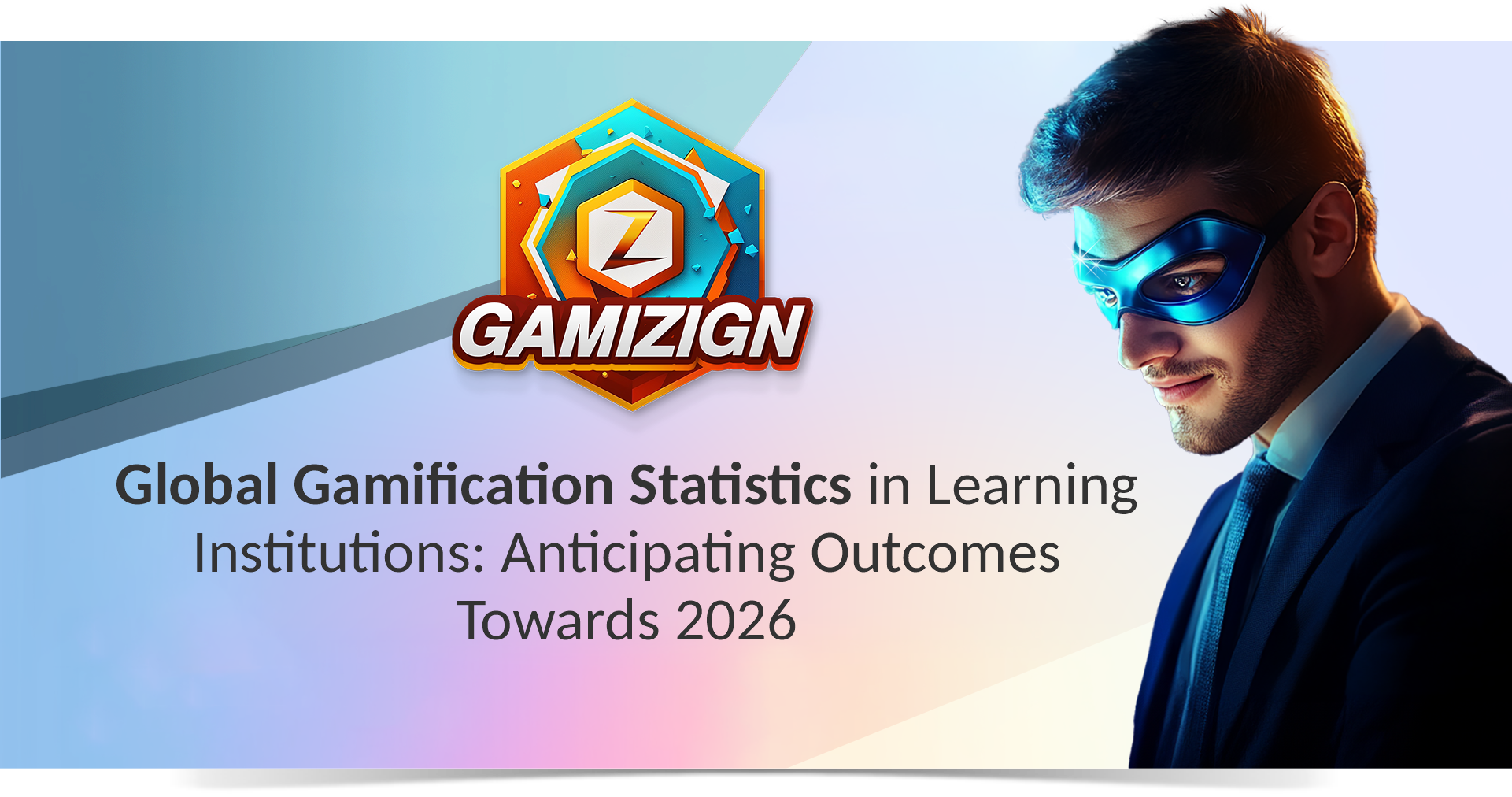
Gamification, the application of game design elements and game mechanics to non-gaming environments, is rapidly transforming the landscape of learning across the globe. This approach is not limited to traditional education settings but is also increasingly prevalent in corporate training centers.
It aims to enhance engagement, motivation, and ultimately, learning outcomes, which are key components contributing to learner and employee satisfaction within institutions.
The shift from often passive teaching methodologies towards more interactive and immersive experiences is a key driver behind this growing trend. Traditional lecture-based instruction often struggles to sustain interest and enthusiasm, leading to decreased motivation.
Gamification addresses these challenges by actively involving learners, providing immediate feedback, and offering tangible rewards for progress, making the learning process more dynamic and effective.
Key Market Growth and Adoption
The global market for gamification in education is experiencing substantial growth. Projections indicate a robust expansion, with one analysis suggesting the market will reach $48.72 Billion by 2029, demonstrating a Compound Annual Growth Rate (CAGR) of 25.85%.
This strong and accelerating growth trajectory underscores the increasing importance and recognized value of gamification across diverse educational sectors.
Regional markets are also seeing significant activity:
-
- The United States represents a significant and rapidly expanding market, valued at $15.43 billion in 2024 and $861 Million for gamification in education.
- North America holds a dominant share of the global gamification education market with $3.8 billion.
- The Europe and Latin America gamification market is projected to reach $11.18 billion in 2025.
- The Far East, particularly China, is projected to exhibit the highest growth rate, with China’s market size expected to reach $4.2 Billion by 2030.
- The Middle East & North Africa region holds considerable potential for growth, driven by smartphone penetration and modernization efforts.
- Australia is also witnessing a growing trend in adoption.
Impact on Engagement, Motivation, and Performance
The sources provide compelling statistics on the impact of gamification within learning institutions and corporate training environments:
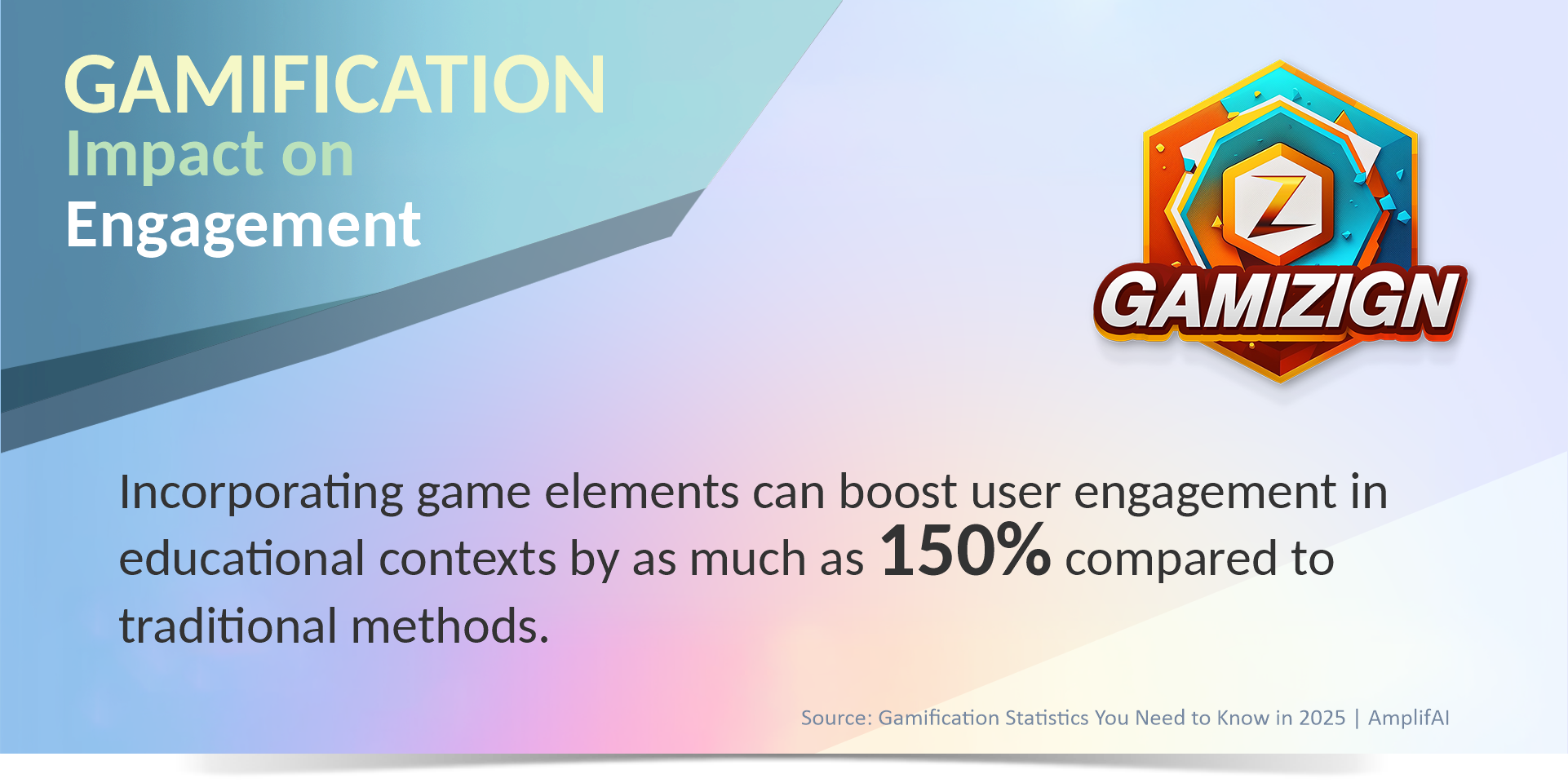
- Learner Engagement: Incorporating game elements can boost user engagement in educational contexts by as much as 150% compared to traditional methods. In corporate training, engagement increases by up to 48%. 95% of employees enjoy having game-inspired elements in their work environment, and 80% of US employees agree game-based learning is more engaging. (Source: AmplifAI), (Source: Medium)
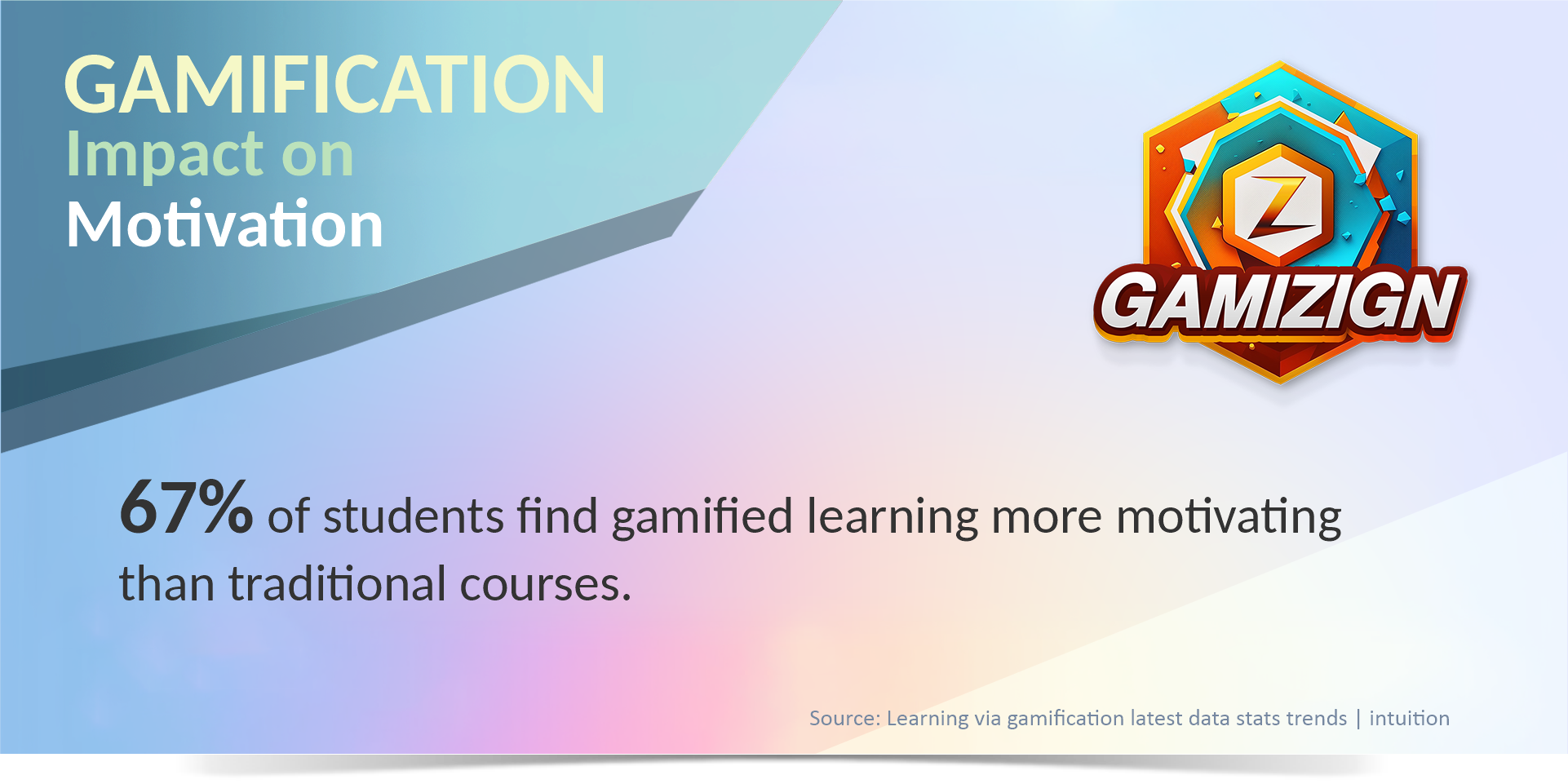
- Motivation: Approximately 67% of students find gamified learning more motivating than traditional courses. 95% of workers say gamification makes them more excited, productive, and desirous to do more. Gamification taps into inherent human desires for achievement, competition, and recognition, triggering positive feelings via neurotransmitters like dopamine and serotonin, motivating learners to repeat desired behaviours. Source: Intuition), (Source: Medium)
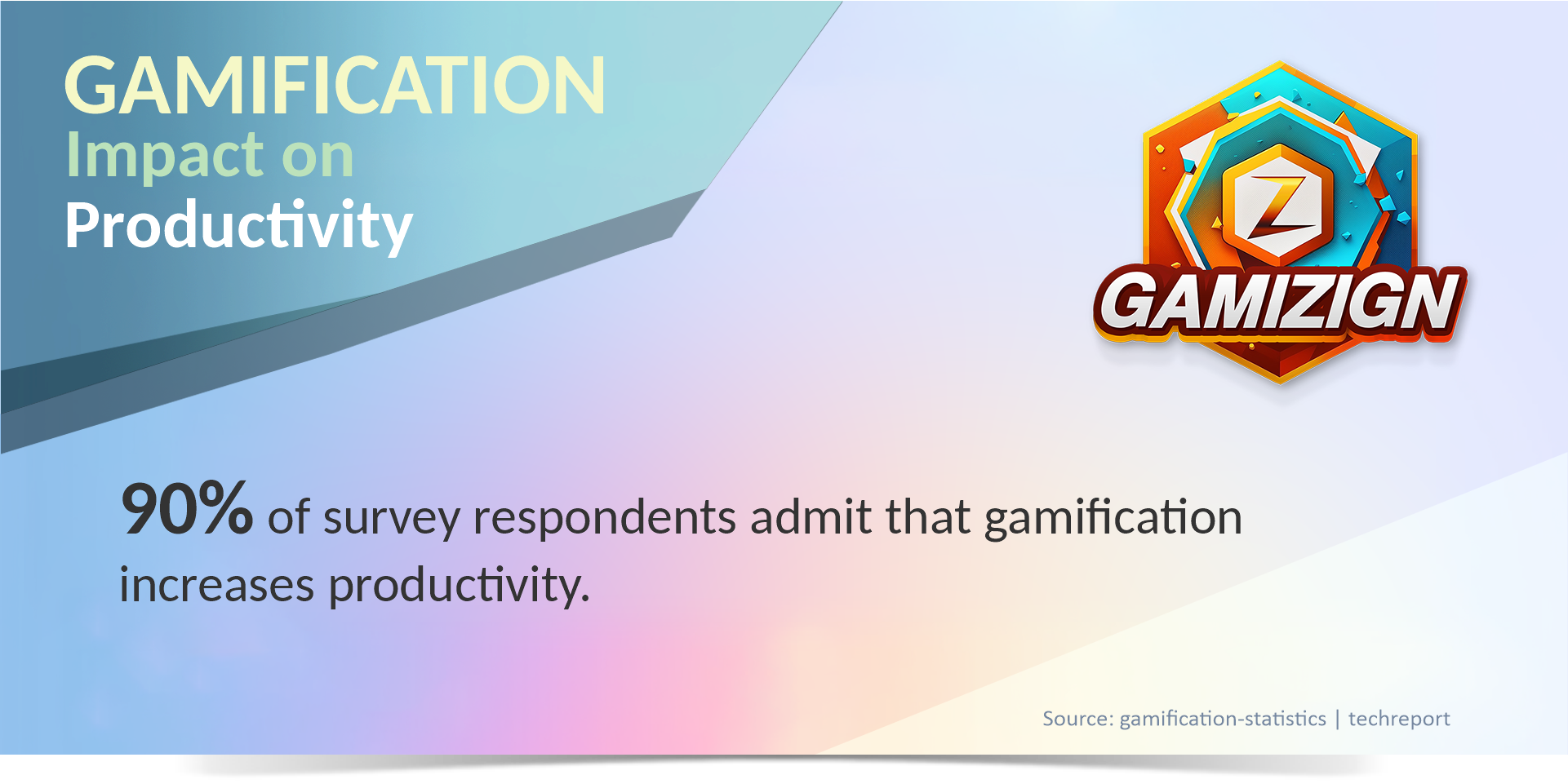
- Productivity: 90% of survey respondents admit that gamification increases productivity. Gamification can boost overall company productivity by nearly 50%. While 67% of students agree gamification improves productivity. (Source: Techreport), (Source: Intuition)
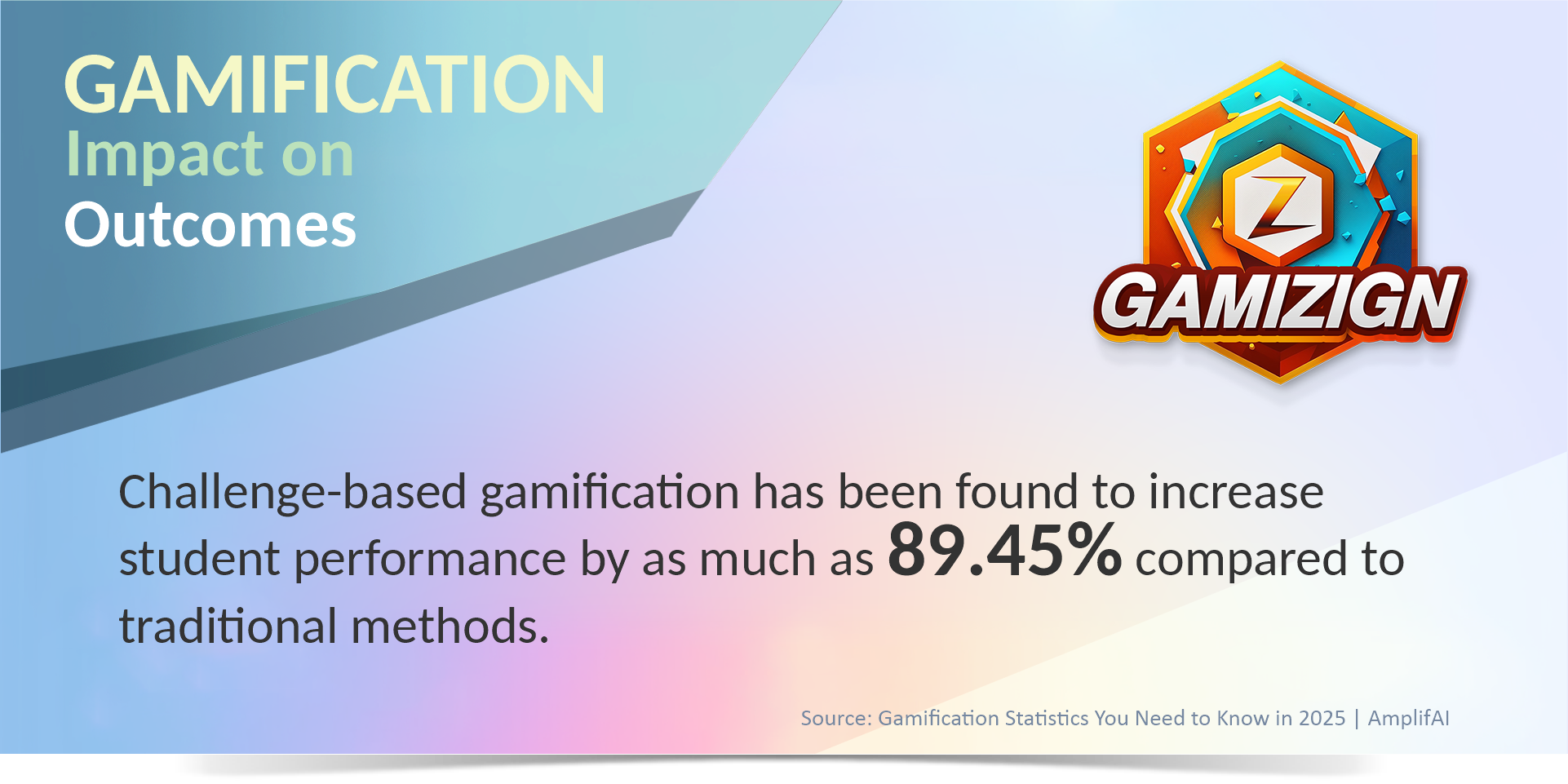
- Learning Outcomes & Retention: Gamification has been shown to enhance recall and memory by an impressive 40%. Challenge-based gamification has been found to increase student performance by as much as 89.45% compared to traditional methods. Gamification can improve learning retention by up to 90% and student test scores by up to 34%. It can also lead to higher homework completion rates and improved attendance. (Source: SC Training), (Source: AmplifAI)
- Skill Development: Gamification is seen as a solution to the skills gap. Access to engaging development opportunities can increase company loyalty.
- Faster Onboarding: Gamification can significantly reduce onboarding time, with one report showing a 90% decline. (Source: Insider)
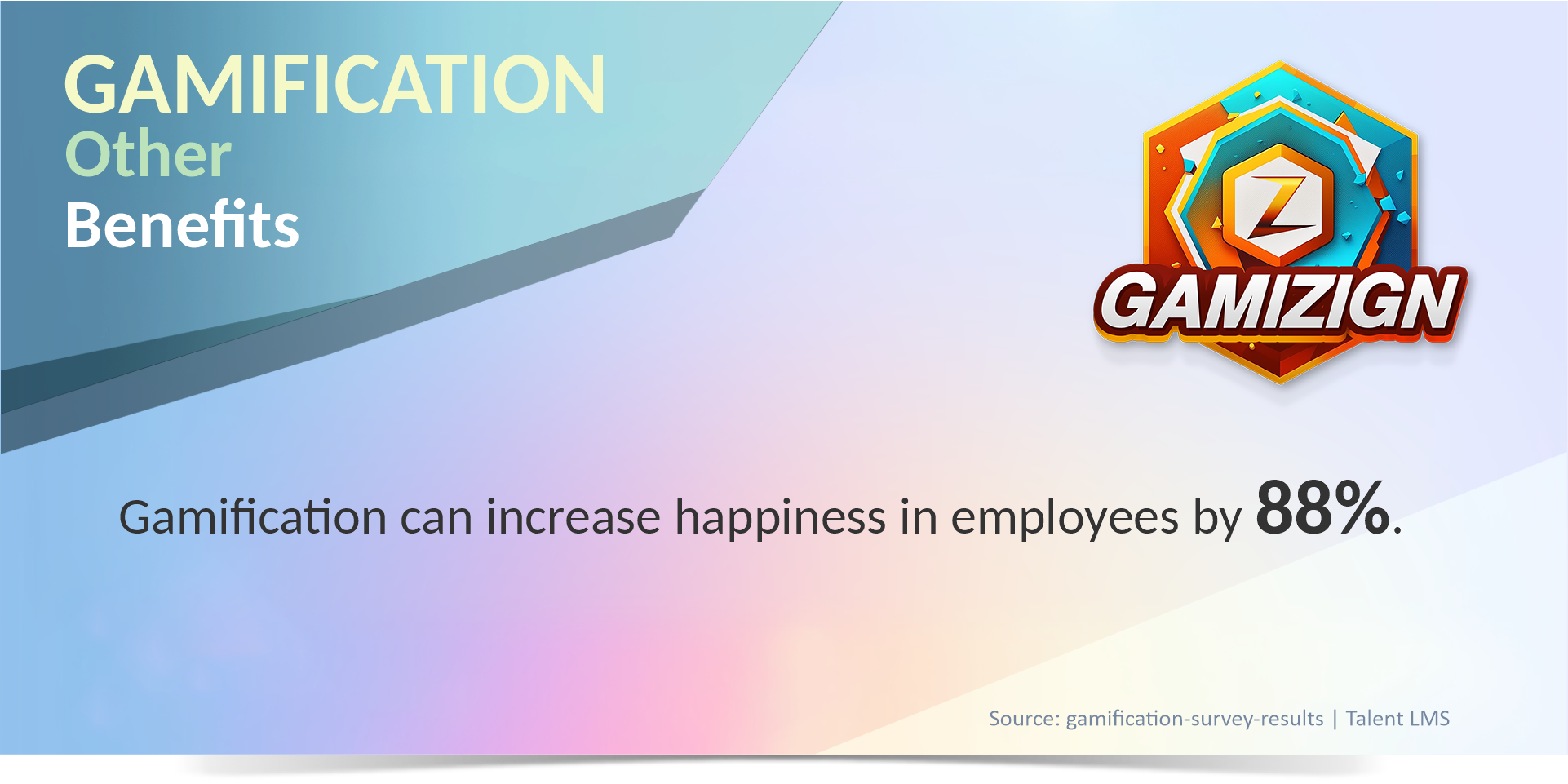
- Happiness & Belonging: Gamification can increase happiness in employees by 88% due to gamified training. It also fosters a sense of community and belonging; in 2019, 87% of participants reported this feeling due to workplace gamification. (Source: Talent LMS)
These statistics highlight how gamification directly impacts key factors that contribute to a positive and satisfying learning and work experience within institutions.
Anticipating 2026 and Future Trends
Looking towards 2026, several trends are shaping the future of gamification in learning institutions:
- Continued Market Growth: The market is expected to continue its strong expansion.
- Integration with Technology: AI and ML are anticipated to play critical roles, enabling solutions that adapt and improve over time. AI-driven systems are already tailoring onboarding and training programs and automating tasks. The AI industry is projected to reach $190bn by the end of the year 2025. Mobile learning and microlearning will continue to grow in importance, with gamification enhancing these formats. Immersive technologies like AR, VR, and MR will step up the level of interactivity. IoT integration is also expected, with 75.44 billion IoT devices projected by the end of the year 2025.
- Enhanced Personalization: Standardized systems are becoming a thing of the past. Gamification will continue to improve personalization, with AI assisting in providing tailor-fit training modules.
- Human-Centered Design: Gamification strategies will increasingly be shaped by employee feedback and aligned with workers’ values, focusing on core drives like Epic Meaning. Involving learners as co-designers will become more important.
- Focus on Recruitment and Training: Gamified solutions will remain crucial for online recruitment and creating flexible, engaging L&D programs for remote teams.
- Data and Insights: Gamified platforms will provide more robust, real-time data on learner engagement and knowledge gaps, empowering instructors and managers to optimize their approaches.
Alignment with Workforce Demographics: As millennials are projected to account for 75% of the global population by 2025, gamification’s ability to provide engaging, collaborative, and purposeful experiences aligns well with their preferences. Social learning, often integrated with gamification, is highly valued by workers.
Ensuring Positive Outcomes and Satisfaction
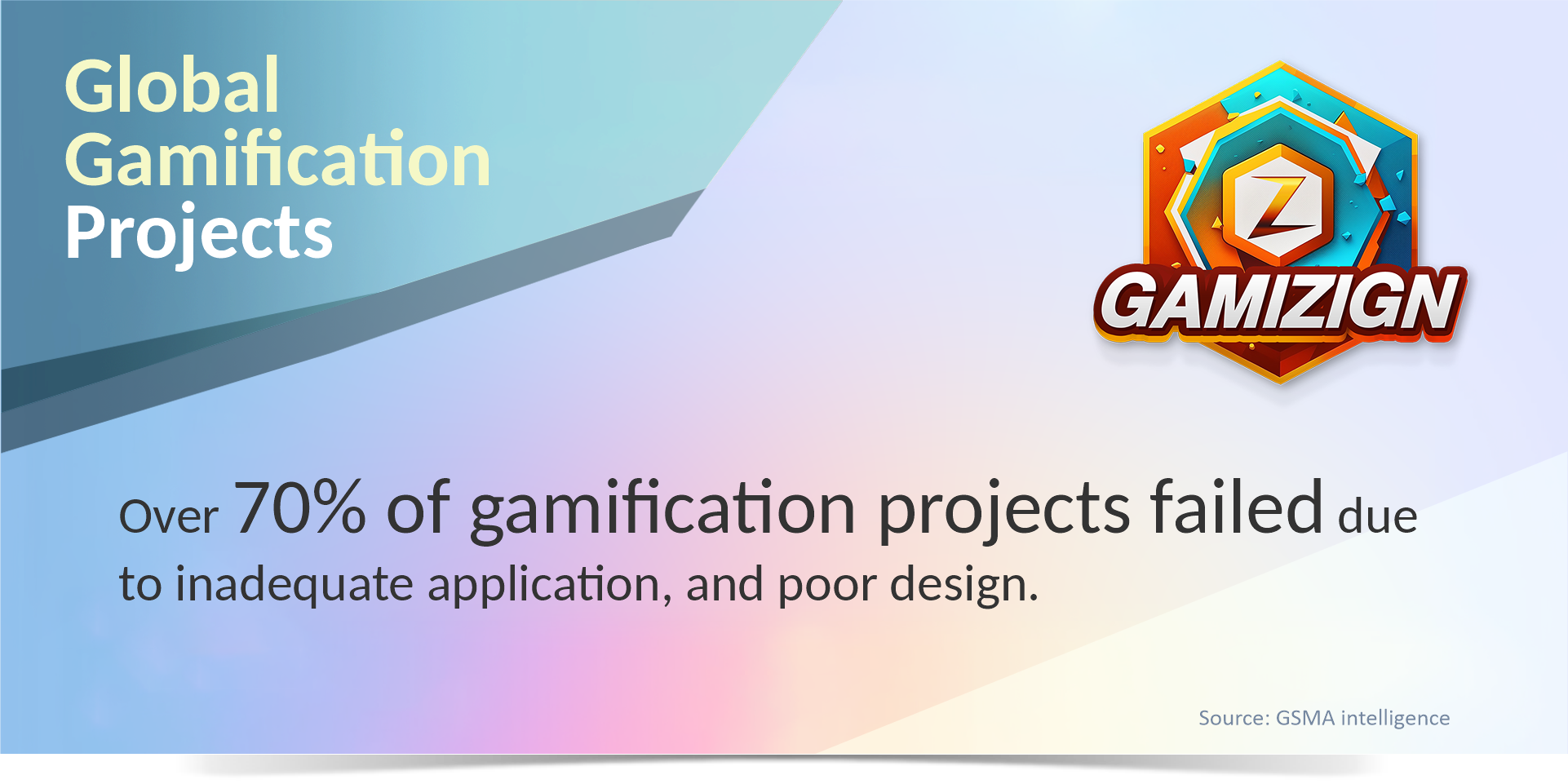
While the benefits of gamification are clear, the sources also highlight that over 70% of gamification projects failed due to inadequate application, lack of long-term engagement, poor design, and lack of straightforward objectives.
Gamizign uses the power of AI to intelligently gamify learning with a ready-made platform that has gained user experience satisfaction, and ensuring positive outcomes.
Ready to transform your learning initiatives from failure experiments to lasting successes?
